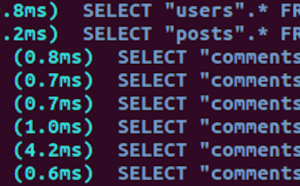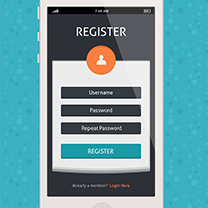11 Reasons to Use Twitter Bootstrap
Key Takeaways
- Bootstrap saves developers time by providing ready-made pieces of code and handling many styling and design aspects, allowing developers to focus on structure and functionality.
- The framework is highly customizable, allowing developers to keep what they need and remove what they don’t, tailoring their projects to their specific needs.
- Bootstrap promotes consistency across different platforms, ensures future compatibility by incorporating elements like HTML5 and CSS3, and is continuously updated, making it a highly competitive and efficient tool for web development.
The popularity of Twitter has helped it cross over from the realm of user-managed social networking to a place where developers sink their teeth into heavy duty code and make the world spin as a result. The Bootstrap framework is the latest innovation to hit the design and development arena, making the creation of websites and apps easier, faster and better in general. If you’re not using Twitter Bootstrap yet, it’s time you took a look. Bootstrap is like a candy store for developers full of a multitude of tools.
So why should you use Bootstrap?
1. Save Time
With Bootstrap, the first thing you do is cash in on a lot of time. The Bootstrap libraries offer readymade pieces of code that can pump life into a website. A web developer doesn’t have to spend time laboriously working out and writing code, but simply find the right piece and fit it into the structure they’re working on. In addition to this, a lot of the styling and design aspects are already taken care of, since the CSS is built with LESS.
2. Customizable
A great aspect of Bootstrap is that you can make it your own. You can sit down and rummage through the whole framework and keep what you need and ditch what you don’t. The whole point of Bootstrap is that it lets you factor in your own needs and tailor your development project accordingly. This is the main reason many developers feel some tools are completely useless on the Bootstrap while others revere the same.
3. Factor in the Design
The Grid Speaks
Creating page layouts requires a decent grid. Using the platform’s grid isn’t mandatory, but it does make your job a whole lot easier. On default mode the platform provides a 16 column grid which is 940px wide. A single column holds 40px with an additional 20px acting as the gutter. Rows and spans can be manipulated as needed. Styling is completed in auto mode and a developer can get the job done just by dropping content into the HTML they’re working with. Additionally, if you need to work through columns and nesting, then you’ve got the right grid to get the job done.
LESS is more
LESS has in reality gone ballistic within development circles. With its additions to the Bootstrap platform, you can use LESS mixins and CSS manipulations to customize the built-in grid. The fact that changes are automatically updated after each variable shift doesn’t hurt either. Bootstrap takes some of the most popular CSS3 utilities and brings them to life as a homogenous reaction on all browsers.
JavaScript
Bootstrap comes equipped with JavaScript libraries that go above and beyond basic structural and styling. JavaScript often becomes an integral part of a web design and developers have to pull in all elements together to see the final form flourish. With Bootstrap, a developer can easily manipulate modal windows alerts, tooltips, Scrollspy, Popover, Button, Typehead, etc. The best part, however, is that Bootstrap enables you to skip writing the script altogether.
4. Consistency
One of the main reasons this toolset was developed was because Twitter was seeing big inconsistencies between developers working on their projects. This caused some issues both on the development front and the end-user front. Since it works with a central set of development code, Bootstrap’s results are uniform across platforms. You’ll see the same thing on Internet Explorer, Chrome and Firefox.
5. Updates
Take JQuery UI as an example here: updates get to users twice a year. Bootstrap, on the other hand, is ever-evolving with updates coming out on a much more regular and constant basis. As soon as web developers find a problem, the Bootstrap team starts looking to fix it.
6. Integration
If you’re working on a site which is already live, but still trying to iron out the creases then Bootstrap can help. For instance, if you use table styling, all you need to do is take the styles you need and copy them to the CSS file you’re working with. Bootstrap will immediately kick in with its own style and all you need to do from there is link up the file you are working with or hotlink to Twitter (more or less). Integration is simple, fast and easy to accomplish and once you’re done you can play with your design to your heart’s content.
7. Responsiveness
Bootstrap is responsive. If you shift from a laptop to an iPad and from an iPad to a Mac you won’t have to fret over your work. Bootstrap adapts to the change in platforms with super speed and efficiency.
8. Future Compatibility
Bootstrap comes equipped with many elements that are being considered the future of design itself. For instance both HTML5 and CSS3 are things that are going to be big in the future. Since the framework takes into account the future of design and development, it has the potential to become a yardstick for web developers in the years to come.
9. Competitiveness
Bootstrap isn’t the only one of its kind. It has been pitted against JQuery UI and the HTML5 Boilerplate, but a more realistic competitor is the Zurb Foundation. Bootstrap 2 has a toolset that the Foundation will have a tough time matching up to. Third party plugins, themes, a plethora of features, codes, etc. are already up for grabs with Bootstrap – which isn’t true for the Foundation at this point. Some of you might feel that Bootstrap has a bloated feel (which the Foundation doesn’t) but that can be easily done away with through the custom Bootstrap download builder.
10. The Docs Talk!
Bootstrap’s documentation is impressive. The case with most newer platforms is that they don’t have proper documentation, but Bootstrap gives you a head start because you don’t have to play with everything to learn and instead can find information on just about anything through the documentation.
11. For the Bosses
You don’t need to spend a lot of time learning to use Bootstrap as it has taken all modular approaches and good architecture and pulled them together. From the perspective of an employer, if you give a web developer the Bootstrap framework then they won’t need to spend as much time learning, as compared to HTML and CSS. Bootstrap allows for immediate quality work, which makes it great for facilitating efficient, outcome-oriented design communication.
Conclusion
After reading all this, if you think Bootstrap can help you up your game as a web developer then check out the platform here: twitter.github.com/bootstrap/. You can either download a compiled version or get the Bootstrap source which has original CSS and JavaScript docs.
Be aware that you do need a working knowledge of web development concepts like HTML and CSS to get the ball rolling. The documentation that comes with the platform can help walk you through the different tools and components you’ll be working with, for example Base CSS, Scaffolding, JS plugins, etc. If there’s any other information that you’re looking for, head over to Bootstrap docs.
So, will you be taking a ride on the Bootstrap train? If you’ve used the platform, what has been your experience?
And if you enjoyed reading this post, you’ll love Learnable; the place to learn fresh skills and techniques from the masters. Members get instant access to all of SitePoint’s ebooks and interactive online courses, like An Introduction to Bootstrap.
Comments on this article are closed. Have a question about Twitter Bootstrap? Why not ask it on our forums?
Frequently Asked Questions about Twitter Bootstrap
Why should I choose Twitter Bootstrap over other frameworks?
Twitter Bootstrap is a popular choice due to its ease of use, flexibility, and responsive features. It provides a comprehensive set of pre-styled components, which can significantly speed up the development process. Moreover, it is compatible with all modern browsers and can be customized to meet specific needs. It also has a large and active community, which means you can find plenty of resources and support online.
How can I customize Twitter Bootstrap to suit my needs?
Twitter Bootstrap is highly customizable. You can modify its CSS, SASS variables, and mixins to suit your project’s needs. You can also choose which components to include in your project, which can help to keep your files lightweight. Additionally, there are many third-party themes available that you can use as a starting point for your customization.
What are the main components of Twitter Bootstrap?
Twitter Bootstrap includes a wide range of components such as typography, forms, buttons, navigation, modals, dropdowns, alerts, and carousels. These components are pre-styled and fully responsive, which means they will automatically adjust to different screen sizes.
How can I get started with Twitter Bootstrap?
To get started with Twitter Bootstrap, you can download the compiled and minified versions of CSS, JS, and fonts. You can also use package managers like npm, RubyGems, Composer, and NuGet. Once you have downloaded the files, you can include them in your HTML file and start using the Bootstrap classes and components.
Can I use Twitter Bootstrap with other JavaScript libraries?
Yes, Twitter Bootstrap can be used with other JavaScript libraries like jQuery and AngularJS. It does not conflict with other libraries and can be easily integrated into your existing projects.
Is Twitter Bootstrap suitable for large-scale projects?
Yes, Twitter Bootstrap is suitable for both small and large-scale projects. It provides a solid foundation that can be easily extended and customized. It also promotes consistency across the project, which can be particularly beneficial for large teams.
What is the learning curve for Twitter Bootstrap?
Twitter Bootstrap is designed to be easy to learn. If you are familiar with HTML, CSS, and basic JavaScript, you should be able to get started with Bootstrap fairly quickly. There are also plenty of tutorials and resources available online to help you along the way.
How does Twitter Bootstrap ensure cross-browser compatibility?
Twitter Bootstrap uses Normalize.css to ensure that elements render consistently across different browsers. It also uses Autoprefixer to automatically add vendor prefixes to the CSS, which helps to ensure compatibility with different browser versions.
How often is Twitter Bootstrap updated?
Twitter Bootstrap is actively maintained and regularly updated. Major updates are typically released every few years, with minor updates and bug fixes released more frequently. You can check the official Bootstrap website or GitHub repository for the latest updates.
Can I contribute to the development of Twitter Bootstrap?
Yes, Twitter Bootstrap is an open-source project, and contributions are welcome. You can contribute by reporting bugs, suggesting new features, improving documentation, or submitting pull requests. Before contributing, it’s a good idea to read the contributing guidelines on the Bootstrap GitHub repository.
Natalia David likes spinning her words into informational pieces about the latest in tech trends, web developing stories, and privacy and security news. She writes for cell phone monitoring product at Mobistealth.com.
Published in
·Business·Content Marketing·Entrepreneurship·Freelancing·Marketing·SEO & SEM·December 31, 2013


